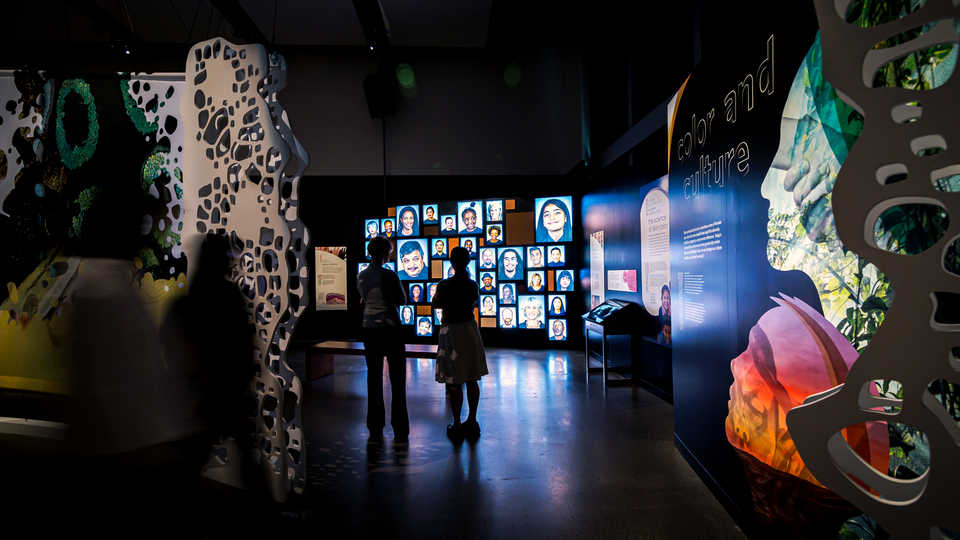
Skin: Living Armor, Evolving Identity was on view June 14, 2019–January 20, 2020.
The California Academy of Sciences’ new exhibit, Skin: Living Armor, Evolving Identity, aims to inspire wonder and curiosity about this uniquely complex organ, illustrate the incredibly adaptive properties of skin across all organisms, and spark dialogue and reflection about skin’s role in shaping human culture and identity.
The idea to develop an exhibit about skin is several years in the making and was initially inspired by the research of renowned biological anthropologist and former Academy curator Dr. Nina Jablonski. Jablonski, an Academy Fellow, studies the evolution of human skin and skin pigmentation and how humans adapt to their environments. Within the exhibit, the Academy presents visitors with a primer on the science of skin color, specifically how melanin, UV rays, and vitamin D impact skin color in all humans.
In particular, the Color & Culture section of this exhibit presents the topics of racism, prejudice, and discrimination through the lenses of history and science. These topics are undoubtedly difficult, complex, and distressing, and we included them within this exhibit because we feel that scientific institutions like the Academy have a duty—today more than ever—to call attention to the fact that human-created constructs of race and identity have shaped and divided humanity throughout history.
The Academy’s mission as a natural history museum and scientific institution is to explore, explain, and sustain life, and a critical part of this mission is to engage audiences in the ways that science impacts our daily lives. This responsibility to the global community includes considering human biodiversity from a scientific and evolutionary perspective and fostering an understanding of how human-created ideas of race—which is, in fact, a fluid, cultural construct—can and have been used to divide and discriminate. The Skin exhibit leverages the research and expertise of Academy scientists, content advisors, and partners of diverse backgrounds and disciplines to tell the story of skin through a biological, anthropological, and social lens.
The Academy hopes that visitors to the Skin exhibit will take with them a deeper understanding of our shared humanity and recognize that we—as humans—are more alike than we are different.